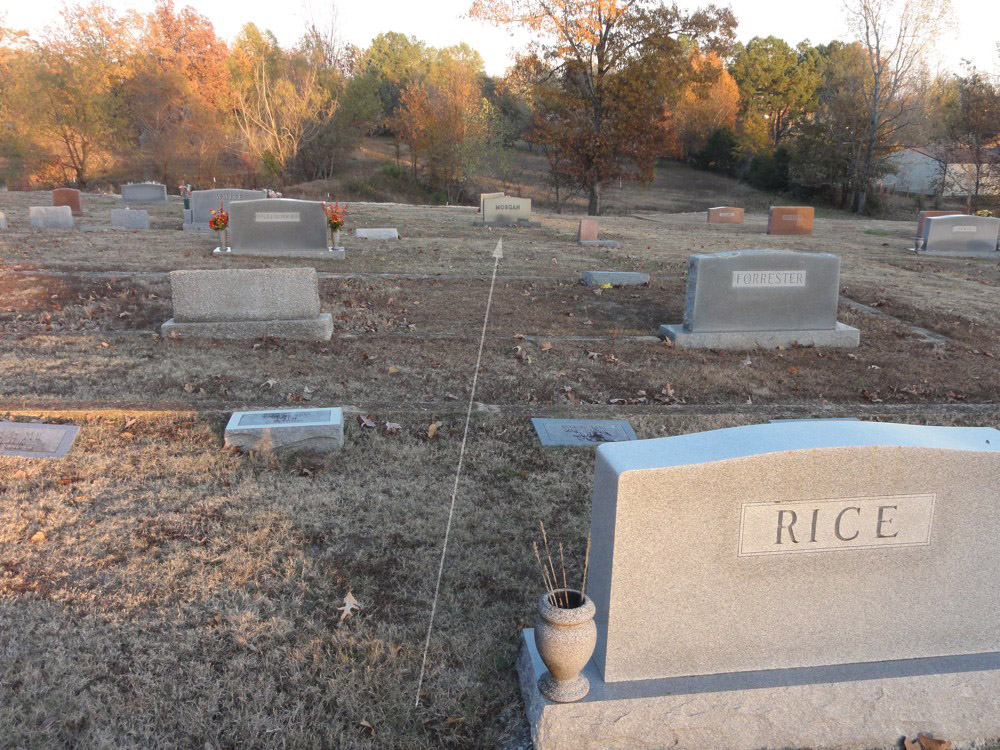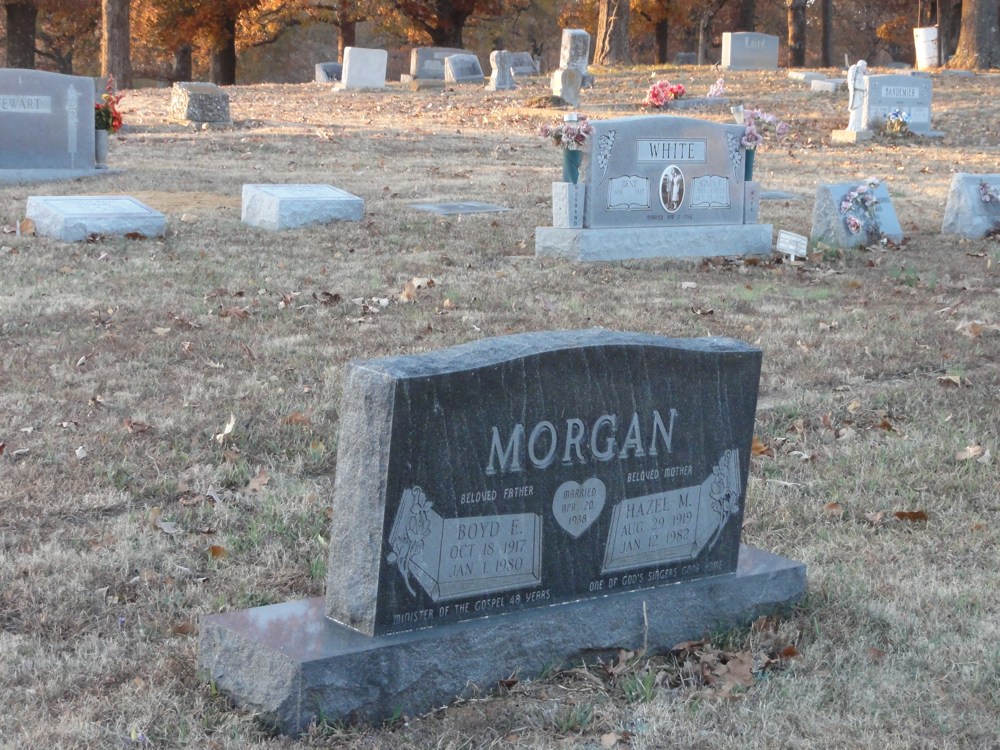Boyd Eugene Morgan
1919-1982
![]()
"The dean of northeast Arkansas preachers,"1 (1 Declared such by Dr. Albert G. Lemmons, former president of Crowley's Ridge College. See: Don R. House, "...I Would Choose No Other." Gospel Exhorter (Jan. 1980):4-5.) Boyd Eugene Morgan was born October 18, 1917, at Poria, Arkansas, the son of Frank and Violetta Morgan. When Boyd's father passed away his mother married Grover C. Poteet, son of the G.W. Poteets of Ravenden Springs. Young Boyd's step-father was a friend of Thomas L. Conner and the both of them had a positive and lasting Christian influence on him.2 (2 Boyd Morgan's personal notes to Michael L. Wilson.)
Morgan was baptized at the age of 11 during a meeting Joe Blue conducted at the Church of Christ in Walnut Ridge. When he was 13 he was leading in public prayer having been taught by Walnut Ridge minister, Thomas L. Conner.3 (3 lbid. Morgan would later preach Conner's memorial service at Leachville. Ark. Dec. 23. 1978.) At the age of 14 Boyd was selected by John L. Fry to preach at an evening service in the church at Walnut Ridge. Morgan's sermon lasted thirteen minutes, but it was a beginning.4 (4 Boyd Morgan, Arkansas Angels. p. 26) And like a stone thrown into still waters, ripples from Morgan's many years of gospel preaching continue at this writing.5 (5 Emmett Smith. personal friend and co-worker with Morgan for twenty-five years, posited that one could visit Churches of Christ the length and breadth of the United States and find few (if any) that had not been influenced in some way by Boyd Morgan. See: ·Yes. I Know Boyd Morgan," Gospel Exhorter (Jan. 1980):2.)
Morgan's second sermon came when he was 15. He spoke thirty minutes and had one public response. Ella and John L. Fry gave him 50 cents for his effort, his first pay as a gospel preacher. 6 (6 Morgan, Arkansas Angels.) During a meeting at Duvall (in Lawrence County), L.N. Moody, the meeting preacher, allowed 16 year old Boyd to preach his first sermon away from his home congregation. 7 (7 Ibid.) Boyd preached his first gospel meeting at Eaton (just west of Lynn, Arkansas) in 1935, at the age of 17.8 (8 Before he left Walnut Ridge for his meeting at Eaton, John L. Fry conducted an ordination service and presented Morgan with ministerial credentials by leaders of the church in Walnut Ridge.) It was there that he met Hazel Maxine Hillburn whom he married three years later. Morgan's mentor, John L. Fry, ailing and unable to stand, performed their wedding ceremony while seated.
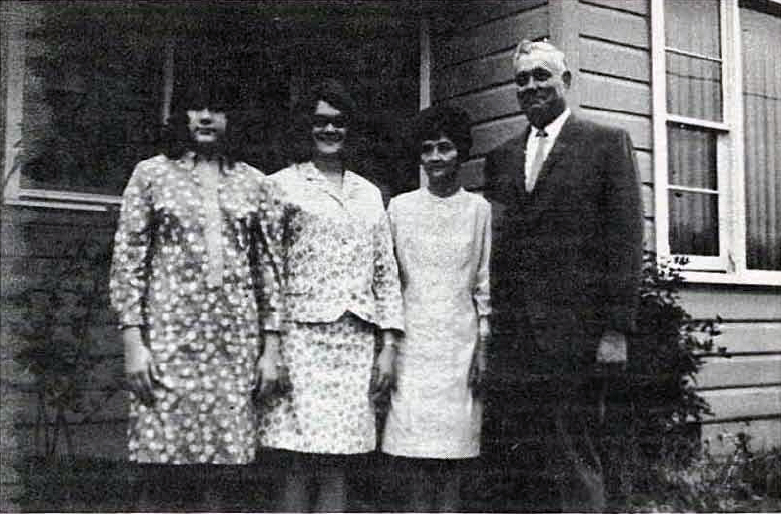 The young couple'searly happiness turned to tragedy and sadness when their first child, Loretta Jo, died at the age of three months. Lawrence County preacher and dear friend of the Morgan's, Lacy Holt,9 (9 Morgan and this writer visited widow Holt at Lynn, Arkansas, during a meeting Morgan was conducting at Imboden in the fall of 1967.) comforted the bereaved parents. Later they would rejoice at the birth of three more daughters: Hazel Eugenia, Karen Faye, and Patricia.
The young couple'searly happiness turned to tragedy and sadness when their first child, Loretta Jo, died at the age of three months. Lawrence County preacher and dear friend of the Morgan's, Lacy Holt,9 (9 Morgan and this writer visited widow Holt at Lynn, Arkansas, during a meeting Morgan was conducting at Imboden in the fall of 1967.) comforted the bereaved parents. Later they would rejoice at the birth of three more daughters: Hazel Eugenia, Karen Faye, and Patricia.
Morgan, a graduate of Walnut Ridge High School, received his collegiate training at Arkansas State College, Harding College, and Crowley's Ridge College. He gained additional insights through careful study of the Bible and related subjects.
As a young and energetic preacher, the tall, deep voiced Morgan10 (10 Morgan's voice was so compelling that when he spoke people listened.) was in great demand for meetings and local church work. As a full-time minister he served churches at Black Rock (1937-41); Manila (1942); Bay (1943-49); Lake City (1949-51); Mammoth Spring (1952-56); Corning (1957-58); and Fourth and Slicer, Kennett, Missouri (1958-60). He conducted hundreds of gospel meetings from Indiana to Oklahoma, but most of his meeting work was done in northeast Arkansas and southeast Missouri. His success was phenomenal, even at the age of 22. During a meeting at Grassylead, near Corning, he baptized three adult males.11 (11 '"News & Notes," Gospel Advocate (Aug. 15, 1940):787.) At Caraway there were thirty responses to his preaching: seventeen baptized and thirteen restored.12 (12 ""News & Notes," Gospel Advocate (Aug. 22. 1940):812.) At Skaggs there were four baptized and eleven restored.13 (13 "News & Notes," Gospel Advocate (Sept. 5, 1940):861.) At Jackson College, near Paragould, there were seven baptized and two restored.14 (14 "News & Notes," Gospel Advocate (Sept. 26, 1940):935.)
Not only was Morgan a successful preacher,15 (15 It is generally accepted that Morgan conducted more funeral services than any other preacher in northeast Arkansas and southeast Missouri. He told Don House in the mid 1970's that he had conducted about 2,000 at the time. He is thought to have baptized about 3,000 people.) he ably defended the truth from the polemic platform when necessary. He met the well known northeast Arkansas Baptist preacher. James Ivy (1912-92) in two discussions; the first was in 1944 when he was only 27 years old. Twelve years later he met Joe H. Howard of Dora, Missouri, in a discussion on the Bible class question. The last year Morgan preached for the church in Kennett he met James Yopp in a debate on the cooperation question. Eight years later Morgan debated the erudite Eugene Britnell of Little Rock at Pocahontas on the cooperation question. 16 (16 The debate was held Sept. 9-13, 1968. Large crowds gathered under a tent each night to hear their speeches. This writer attended each session and took copious notes. During one evening Morgan became incensed over comments made by Britnell and had to be briefly restrained, otherwise Christian conduct characterized the entire discussion.) Robert Lyles (brother to Cleon Lyles) served as a moderator for Morgan and wrote that (Boyd) wanted to know the truth above all else. defended what he believed to be right and never made an enemy when debating.17 (17 "Boyd Morgan as I Remember," Gospel Ex honer (Jan. 1980):4.)
In 1960 Morgan left Kennett and joined the development staff at Crowley's Ridge Academy in Paragould, Arkansas. He had served as a board member of CRA and had made many positive suggestions for the school. Emmett Smith said, "His deep faith in the value of Christian education made him an effective force in fund raising and in student recruiting at CRA and Crowley's Ridge College. "18 (18 '"Yes, I Know Boyd Morgan," Gospel Exhoner (Jan. 1980):2.) When CRC was begun in 1964 Morgan became vice president for development, the position he occupied until his death.
In this capacity he wielded a significant influence upon the lives of many parents and students in the early years of the school. Through lives of hundreds of young men and women, enriched by their association with him, Morgan's influence literally circled the globe.
It was the good pleasure of this writer to work in the development office at CRC with Boyd Morgan in the mid 1970s and learn from and about him. Many trips were taken together in Boyd's old cars. A new car was something he cared little about. Those who knew him well knew that he chewed tobacco and when not using a cup in his car, he would roll down his window and excise the tobacco juices with a gusty "spit."
Also Boyd loved gospel music. He was especially fond of quartet music and the Chuck Wagon Gang. Sometimes he played their records over and over until the music would fill the halls of the second story of the administration building at CRC where his office was located. Those who listened closely could hear him singing along.
But perhaps his first love was gospel preaching. During the years at CRC he preachedon a regular basis for churches at Center Hill in Paragould and then at Palatka in Clay County. At his memorial service Tony Pringle, Bud Taylor, Buel Turner, Jerry Turner, Kenny Willis, and Reedus Woolard, all of the Palatka congregation, served as pall bearers.19 (19 '"Obituaries- Boyd Morgan," The Times Dispatch, 9 Jan. 1980, p. 12A. Honorary pall bearers were Paul Hunt. Don Johnson. and Jim Woolard.)
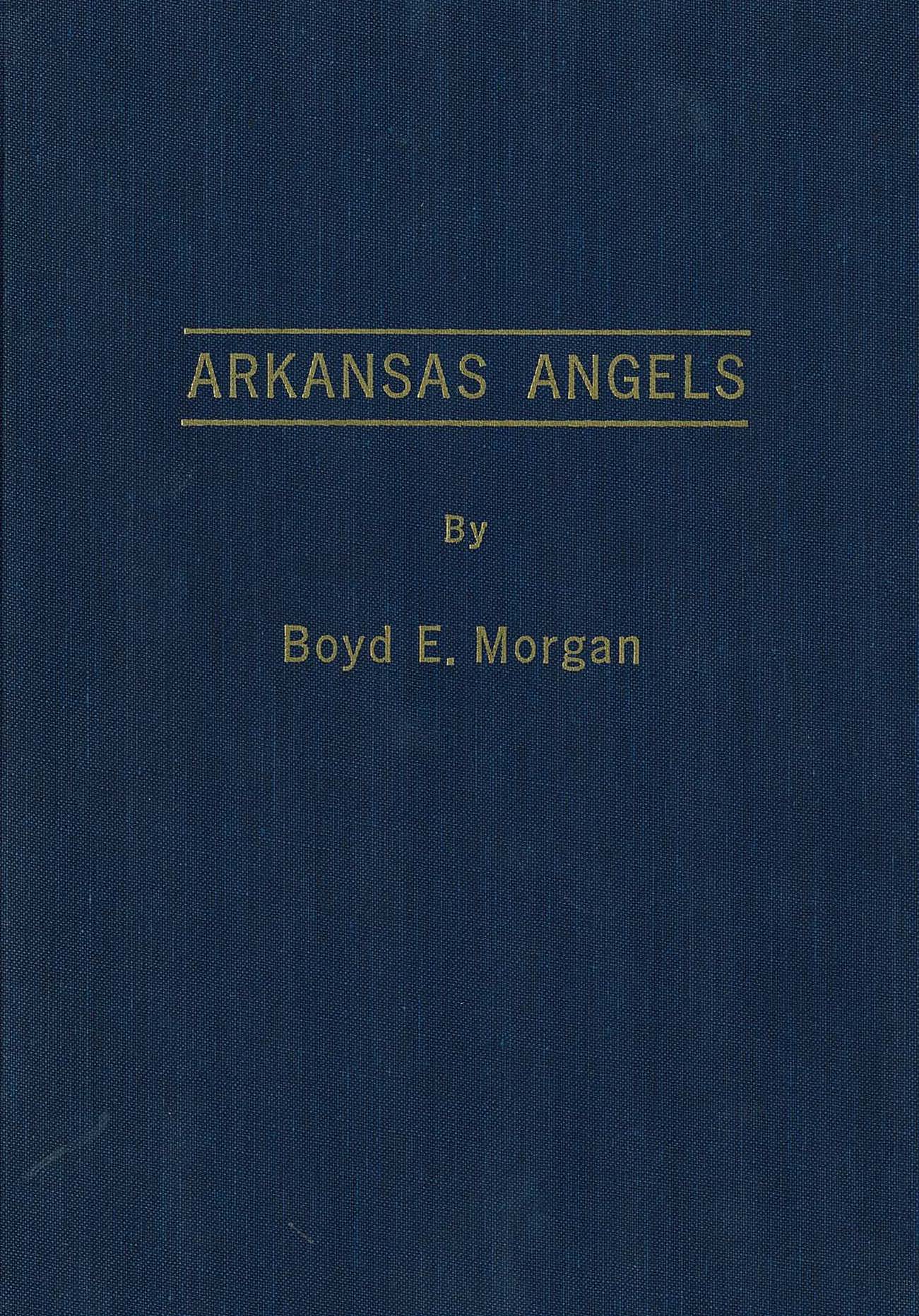 As a writer Morgan achieved some success with his folksy biographical book, Arkansas Angels, published in 1967 by College Bookstore and Press in Paragould. The book was Morgan's tribute to "those who before and with me have proclaimed as earthen vessels the unsearchable riches of Christ. "20 (20 "Boyd E. Morgan," Gospel Advocate (Jan. 24, 1980):59.) Reviews of Morgan's book appeared in major papers by popular writers. Reuel Lemmons, editor of the Firm Foundation, said Arkansas Angels "is one of the finest contributions to the history of the church that we have ever seen. "21 (21 "Books in Review," Firm Foundation (July 25, 1967):478) L.R. Wilson wrote that the book merits "a careful reading, and all of us owe a debt of love and gratitude to Brother Morgan for his prodigious labors in bringing us this story which needed to be told. "22 (22 "Books in Review," Firm Foundation (Sept. 5, 1967):572) Leslie G. Thomas stated that Arkansas Angels "contains so much interesting and useful information, as to make it a book which every gospel preacher, church leader, and other Christian people" shouldhave.23 (23 '"Good Biographical Reading," Gospel Advocate (Jan. 25, 1968):58-59.) P.D. Wilmeth occupied parts of two pages in the Gospel Advocate praising Morgan's book and encouraging his readers to buy, read and learn from it.24 (24 "Arkansas Angels," Gospel Advocate (June 22, 1967):395-396.) Arkansas Angels has been reprinted several times since 1967. Its continuing popularity will demand another reprint before too long.25 (25 Morgan had planned a second volume of Arkansas Angels but failing health prevented him from developing the new book. Because of Michael L. Wilson's keen interest in Arkansas Restoration history, educational background in church and American history, and because his family is one of the oldest Christian families in Arkansas. Morgan asked him to continue the Arkansas Angels project and provided him with some information he had gathered for the book. Morgan wrote Budde Little of Pontiac, Michigan, indicating that Wilson would complete the work should his health fail him. (See: Letter. April 1979, in this author's possession; also, Gospel Advocate (Jan. 24, 1980):59).)
As a writer Morgan achieved some success with his folksy biographical book, Arkansas Angels, published in 1967 by College Bookstore and Press in Paragould. The book was Morgan's tribute to "those who before and with me have proclaimed as earthen vessels the unsearchable riches of Christ. "20 (20 "Boyd E. Morgan," Gospel Advocate (Jan. 24, 1980):59.) Reviews of Morgan's book appeared in major papers by popular writers. Reuel Lemmons, editor of the Firm Foundation, said Arkansas Angels "is one of the finest contributions to the history of the church that we have ever seen. "21 (21 "Books in Review," Firm Foundation (July 25, 1967):478) L.R. Wilson wrote that the book merits "a careful reading, and all of us owe a debt of love and gratitude to Brother Morgan for his prodigious labors in bringing us this story which needed to be told. "22 (22 "Books in Review," Firm Foundation (Sept. 5, 1967):572) Leslie G. Thomas stated that Arkansas Angels "contains so much interesting and useful information, as to make it a book which every gospel preacher, church leader, and other Christian people" shouldhave.23 (23 '"Good Biographical Reading," Gospel Advocate (Jan. 25, 1968):58-59.) P.D. Wilmeth occupied parts of two pages in the Gospel Advocate praising Morgan's book and encouraging his readers to buy, read and learn from it.24 (24 "Arkansas Angels," Gospel Advocate (June 22, 1967):395-396.) Arkansas Angels has been reprinted several times since 1967. Its continuing popularity will demand another reprint before too long.25 (25 Morgan had planned a second volume of Arkansas Angels but failing health prevented him from developing the new book. Because of Michael L. Wilson's keen interest in Arkansas Restoration history, educational background in church and American history, and because his family is one of the oldest Christian families in Arkansas. Morgan asked him to continue the Arkansas Angels project and provided him with some information he had gathered for the book. Morgan wrote Budde Little of Pontiac, Michigan, indicating that Wilson would complete the work should his health fail him. (See: Letter. April 1979, in this author's possession; also, Gospel Advocate (Jan. 24, 1980):59).)
What is the Gift of the Holy Spirit? was a much smaller book written by Morgan and published by College Bookstore and Press in 1974. It was dedicated to the members of the Palatka Church of Christ and written, as the author indicated, "because he feels that is needed. "26 (26 "Preface." Early in 1974 Michael L. Wilson wrote and College Bookstore published A Symposium on the "Gift of the Holy Spirit." Morgan felt his book would provide some balance to those views submitted for consideration by Wilson.)
Despite his success as an author and preacher, "the highlight of my life," said Morgan, was a trip to the Holy Land in 1977. He returned to the land of the Lord early in 1978 and took a few others with him.27 (27 2Crowley's Ridge College Bulletin (March 1977):4; and, Don House, " .. .I would choose no other course." Gospel Exhorter (Jan. 1980):4-5.)
One of Morgan's last public appearances away from the Palatka Church was when he shared the pulpit with his CRC colleague, Carroll Trent, in an afternoon service at a Homecoming at the Free Street Church of Christ in Walnut Ridge the last Sunday in October, 1978.28 (28 Carroll Trent. "Northeast Arkansas Preacher Dies." Pulaski County Christian (January 1980):8.) Boyd's deteriorating condition made preaching increasingly difficult in 1979. He told his friend Budde Little of Pontiac, Michigan, in an April 1979 letter, "I have had cancer for a year now and am fighting that battle. The Lord has been with me. I am not able to work at CRC anymore but manage to preachmost Lord's days. "29 (29 A copy of the letter is in this writer's possession.)
This writer visited with Morgan at his home during the Thanksgiving holidays of 1979. Boyd was bedfast but spoke clearly about his desire to have the second volume of Arkansas Angels completed. A commitment was made to him to see the work through regardless of time, money or effort needed.
Boyd Eugene Morgan died January 1, 1980, at St. Bernard's Medical Center in Jonesboro, Arkansas, at the age of 62. His memorial service was held on Thursday, January 3, in the Main Street Church of Christ building in Walnut Ridge. Officiating at the service were three of his closest friends: Arthur C. Blackwell, Robert Lyles and Emmett Smith.30 (30 His body was laid to rest in the Oak Forest Cemetery at Black Rock, Arkansas.) The singing was provided by members of the Choralaires, led by Kay Gowen, at the request of Morgan.
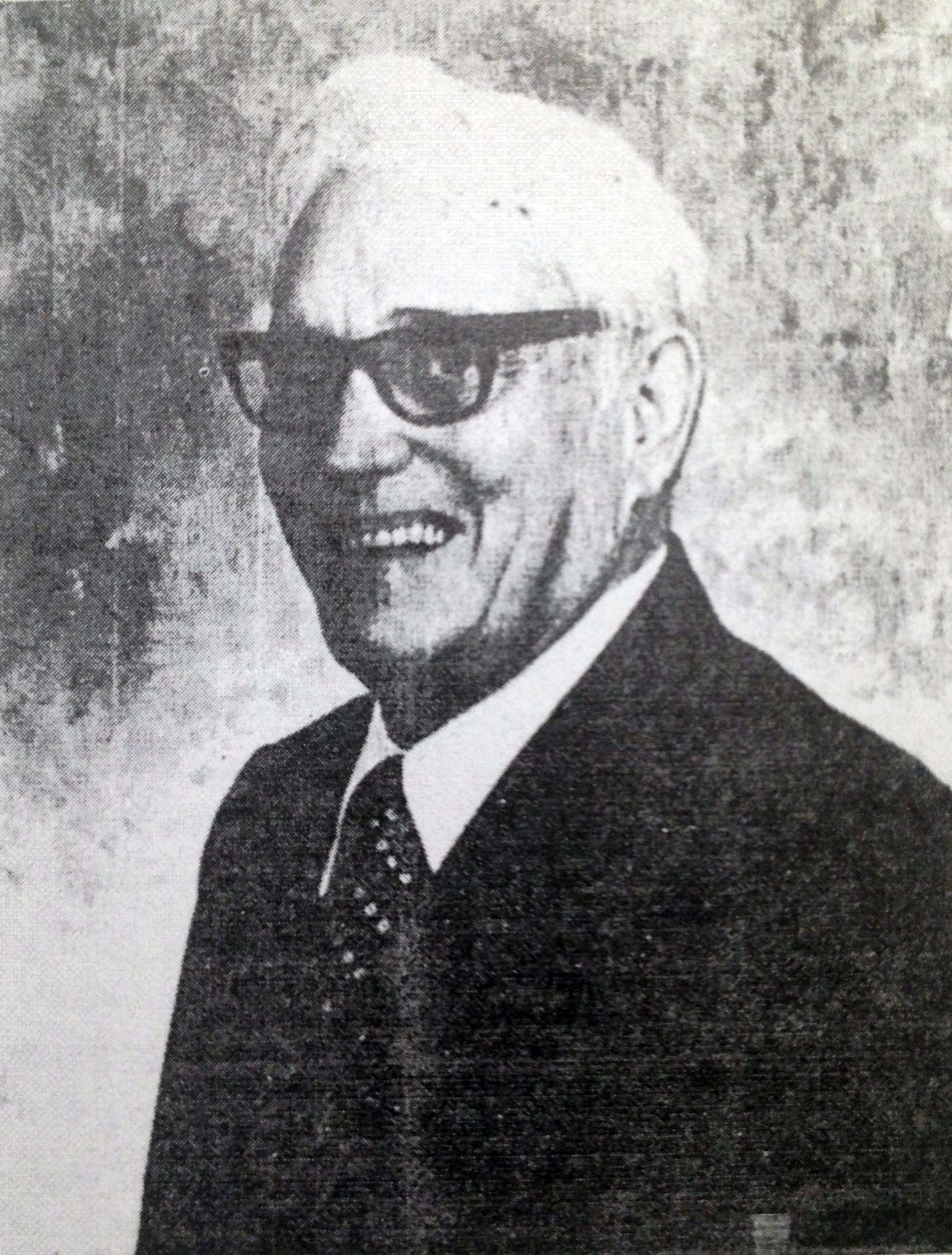 Since Morgan's death, many Christians have sought to recognize and honor his life's work. The CRC music department prepared "Hilltops of Glory," a memorial tribute to him, recorded by alumni Choralaires members. The long play album featured all the songs sung by the group at his memorial service. A life-like photograph of Morgan appears on the album cover with the title song, "Hilltops of Glory" (one of Morgan's favorite songs) displayed in gold. On August 17. 1991, the first Annual Boyd Morgan Memorial Tri-State Singing was held at the Arkansas State University Convocation Center in Jonesboro. V.E. Howard was master of ceremonies and more than 3,000 of Boyd's friends were in attendance. The first leader was Lawrence Treadway of the Pine Knot Church of Christ near Paragould. Other participants were Marshall Conner, Hershel Johnson, et al, and Tom Miller who put the program together. Gerald Fears, Morgan's son-in-law and gospel preacher, introduced Hazel, Boyd's wife, and their three daughters.
Since Morgan's death, many Christians have sought to recognize and honor his life's work. The CRC music department prepared "Hilltops of Glory," a memorial tribute to him, recorded by alumni Choralaires members. The long play album featured all the songs sung by the group at his memorial service. A life-like photograph of Morgan appears on the album cover with the title song, "Hilltops of Glory" (one of Morgan's favorite songs) displayed in gold. On August 17. 1991, the first Annual Boyd Morgan Memorial Tri-State Singing was held at the Arkansas State University Convocation Center in Jonesboro. V.E. Howard was master of ceremonies and more than 3,000 of Boyd's friends were in attendance. The first leader was Lawrence Treadway of the Pine Knot Church of Christ near Paragould. Other participants were Marshall Conner, Hershel Johnson, et al, and Tom Miller who put the program together. Gerald Fears, Morgan's son-in-law and gospel preacher, introduced Hazel, Boyd's wife, and their three daughters.
Before Morgan's death, he and Emmett Smith made plans to begin a Bible Institute on the campus of CRC. It began in 1980 and was named the Boyd E. Morgan Bible Institute in honor of the late and lamented dean of gospel preachers.31 (31 '"Boyd E. Morgan Bible Institute," Gospel Exhorter (Feb. 1980):1.) Also honoring Morgan post-humously was a series of articles in the Gospel Exhorter solicited and edited by Don House, friend and co-worker with Morgan on the paper and in the development office at CRC.32 (32 See: Gospel Exhorter (Jan. and Feb., 1980).
Reuel Lemmons wrote in his tribute:
Boyd was a common man's man. He knew the blood and sweat and tears that go into getting through this old world. He knew every smell, and feel, and sight and sound and taste that makes up the daily experiences of mortal man. He was akin to them all.
His faith was deep. His spirit was bold. His trust was implicit. He did not fear death. He knew that it was but a graduation to glory. The Hand into which he had put his own in early youth beckoned and Boyd followed.
-Dr. Michael L. Wilson, Arkansas Christians:A History of the Restoration Movement in Randolph County, Arkansas 1800-1995, c.1997, Delight: Gospel Light Publishing Co., page 297-302.
![]()
Directions To The Grave of Boyd E. Morgan
Boyd E. Morgan is buried in the Oak Forest Cemetery in Black Rock, Arkansas. This little town lies in the northeast region of the state near Pocahontas. Take Hwy. 62 west out of Pocahontas. When you get to Hwy. 412, turn left and head toward Walnut Ridge. You will come into the small town of Black Oak. In town, turn left on Cemetery Rd. Enter the cemetery at the first entrance and enter the first lot to the right. The Morgan family plot faces the street.
GPS Location
36.109522, -91.109052
![]()

MORGAN
Boyd E. - October 18, 1917 - January 1, 1980 - Minister of the Gospel 48 Years
Hazel M. - August 29, 1919 - January 12, 1982 - One Of God's Singers Gone Home
Married - April 20, 1938.
![]()
Photos Taken 11.14.2014
Webpage Produced 02.25.2015
Courtesy of Scott Harp
www.TheRestorationMovement.com
*Special thanks to Tom L. Childers and Charlie Wayne Kilpatrick for assisting in the burial location. They, along with your web editor, took a trip into northern Arkansas to find the graves of gospel preachers of yesteryear in November, 2014. We traveled together three days and located the final resting places of nearly forty preachers and their families. It was a great trip. Many of the personalities we researched were chronicled in Boyd E. Morgan's book, Arkansas Angels, or later in Dr. Michael L. Wilson's book, Arkansas Christians: A History of the Restoration Movement in Randolph County, 1800-1995.
![]()


